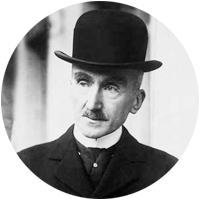696
The invention of a miracle: Oleg Aronson about the affective commonality, born of cinema
Forty five million four hundred fifty five thousand seventy five
© Ger van Elk. Portrait
The project "State of cinema" plans to release excerpts from several texts published in the 4th issue of the magazine "Blue Sofa" (2004) which was dedicated to cinema. For a start, the article is a teacher MSNC and RGGU, philosopher Oleg Aronson, in which he discusses cinema as a modern miracle — one of the few that can breathe life in free world, linking us in the invisible community.
The paradox arises at the very beginning when we're just trying to ask a question about the nature of the cinematic image. How is it different and how is it possible to describe, to delineate with numerous other images of the modern world. This paradox can be formulated as follows: at a time when we're watching a movie, watching a picture, tell a story, the Director's findings, — images which appear to us as visible, can be called cinematic only conditionally. They belong to, or painting, or theatre, or literature, but what is the specificity of the cinematographic image, born in the result of a cast image in motion is not entirely clear. I can say that the specificity of cinema (and, as a result, his imagery) are such elements as montage or close-up... However, these arguments can hardly be taken into account, because already the first film, from which the film counts the history did not contain neither one nor the other, like so many of the theorists sometimes link the nature or even the essence of the movie. It was a static image of the middle plan. And so were removed almost all of the films of the Lumiere brothers. Everything in them was moving. However, not only.
Set in motion the picture would not be that surprising. By the time of the invention of cinema was invented many optical devices, which in one form or another was already the motion pictures that we usually believe, talking about the cinema. It seems not accidental that the history of cinema we counted not from the invention of the movie camera, but from the first movie, steeped in legends, from noisy mass success of a simple and banal spectacle from a few minutes of static plan, which recorded the arrival of the train at the station of La Ciotat. It is possible that this "the success of the first movie" has more to do with the nature of cinema, rather than the fact of recovery of the picture. In addition to attention to characteristic filechecksum the image includes changing the type of audience perception, resulting in a natural reduction very quickly arasimowicz visible images of the film and the other area of images, where the film still remains valid, that is, carries that cinematic residual matter, which is essential not so much the common perception of how the images themselves are of community, or in other words, communicative images that are outside the scope of representation.
"Is it accidental that the history of cinema we counted not from the invention of the movie camera, but from the first movie, steeped in legends, from noisy mass success of a simple and banal spectacle. It is possible that this "the success of the first movie" has more to do with the nature of cinema, rather than the fact of recovery of the picture"On the presence of this other imagery that remains if we take out the brackets all images-image, is reflected in the very beginning of the film, which born in December 28, 1895, the first collective viewing, organized by the Lumiere brothers, and not when the photo was first set in motion, and not even then, when the lumière brothers patented a camera-like device that combined a motion picture recorded on the tape with a projection screen. He is similar to the optical effect was already well known before 1895, implemented by Edison for several years before the session of the Lumiere brothers. The only difference was that Edison made optical toy to eyes of the viewer, while the brothers of Lumiere, projecting the image on the screen immediately caught a collective effect of the spectacle. But to discover the special attraction of the collective motion, but he still needs the "success" of the first movie. Then, for many years, theorists have interpreted the cinematic movement in the coordinates of the individual perception that they continue to do so to this day. But even those who spoke about the fundamental mass movie character (you can name and Kracauer, and Benjamin, and Eisenstein), but rather postulated that mass than it was analyzed. However, when Eisenstein is trying to understand the impact of the film itself, it goes from the direct psychological impact ("Installation of cinema attractions") to some deep archetypal structures of the unconscious that is common to each, the structures outside the line of sight, beyond what is visible, in a kind of archaic residue of our thinking ("Method"). At the other extreme from high psychoanalytic ontological archaic is beniaminova politicized collectivity, which is not dealing with archetypes and cliches deaeration mass production. And in that and in other case, we are faced not with an individual experience of perception, but with other, outside, with experience, takes us back to the very conditions of perception, dominated by sustainable archetypes or dynamically successive stereotypes. In these fundamentally not reducible to each other the concepts of the General fact that perception and thinking here never ceases to be an individual, but only find a huge dependence on those forces that remain imperceptible in the perception and in the most unthinkable thoughts. It still binds us to the tradition of internal justification and understanding of perception and thinking. Meanwhile, even in the example with the first film show to conclude the other logical possibilities, break the fundamental connection between sensual perception and the state in which we reside while watching the movie. The same can be said of the mindset that if it ceases to be "mine", as the movement of the visible images is intense our ability to think.
Returning to constantly supplanted by the history and mythology of the movie the gap between Edison and Lumiere, we can say the following. In the office of Edison was manifested the power of the human thoughts, creating an optical illusion, a trick of the mind, competing with the miracle of the resurrection of the dead matter. In a sense, they are forced to be at one with the Creator, the author of the technical inventions, forced to submit to his will and purpose. Film projection by the Lumiere exposed in the first place of the cult and the archaic time of the show where the community is more important than performance. (By the way, no matter how much historians nor denounced the myth of the collective shock of the audience when watching "train Arrival", is itself indicative of this mythology.) All subsequent attempts to interpret cinema as another art was designed to return the viewer from this regressive community to the subjectivity of the personal, individual perception. However, the emphasis on the ability to experience and comprehend the film as a work of ecstatic erases sector (commercial vehicles) of the affectivity of the cinematic image leads to a permanent resuscitation of the differences between high and low, beautiful and ugly, truth and falsehood, which closes the path to bland, banal, become visible, to what was an integral part of the Lumiere films, and that not only did not oppose the success of these films, but, most likely, was his condition.
"In a sense, the viewer is forced to be at one with the Creator, the author of the technical inventions, forced to submit to his will and purpose. Film projection by the Lumiere exposed in the first place of the cult and the archaic time of the show where the community is more important than the presentation"the Many cliches, which today feeds the film industry, have only an indirect relationship to that dull that lay at the origins of the cinematic image.
It is possible that there is no single specific cinematic image, and all that cinema makes the very fact of its existence, "degrading" or "developing", it just changes our relationship to the image itself. And clichés are interesting precisely because it points to not only its formal characteristics, techniques to capture the audience's attention, but, no less importantly, on your own source of ecstatic commonality in the way. In the image, not for society and not for the people, and the way in which the commonality finds himself almost mechanically, just as it reveals itself in archaic ritual.
When we are trying to find a cinematic specifics on the affects of community, we actually push ourselves to go from image where image and image differ. Along the way, you have to constantly keep the attention on the distinction between visual and non-visual (wishy-washy). The latter is precisely the scope of the present experiment that the cinema produces with our perception, rehabilitating the forces of the banal, we do not notice in everyday life, which evades the eye, but which open up a whole world of microsuede and microcastle prior interpretations of speech and opinion.
The question is, how to talk about this banal, so banal that it almost evades our sight, but with some relentless obviousness is the essential characteristic of the cinematic image.
Here is a very productive theological Analytics, which was devoted to the analysis of things or beyond the perception of (God) or changing (miracle). In Christian theology, is constantly dealing not just with a description of the transcendental, but creating a tool to show the presence of God in the world, is actually dealing with the world of those images that napoloni individual perception and, moreover, indicate its limitation. Revelation and miracle belong to such images.
And, as close as possible to the communicative cinematic image, first we ask issue that is a miracle as the way. Outset that we will not understand the miracle as something that brought into the world from the outside (the inexplicable forces of transcendence), even though it contradicts many of the theological interpretations. We also will not consider the miracle of the usual focus and treat it natsionalisticheskie, believing that for all the wonders you can find an explanation from the point of view of common sense. In addition, the miracle, as it has already become clear, will not be for us a metaphor when the word itself is easy to apply as the latest technological inventions and especially the us have affected works of art, and incomprehensible phenomena of nature.
"When we're trying to find a cinematic specifics on the affects of community, we actually push ourselves to go from image where image and image differ. Along the way, you have to constantly keep the attention on the distinction between visual and non-visual"We proceed from the assumption — and this, incidentally, does not contradict Christianity, — that miracle in the world and belongs to this world. Only in Christian dogma miracle dialectically connected with revelation, is a necessary condition for faith, but does not exist without faith. Try, however, to focus not on the communication of revelation and miracles, and their difference. Note that all those financial miracles that Jesus does, in some way meaningless. It's like they need to attract the attention of those who can not (and should not) understand speech, parables, sermons. Vision and understanding here goes past knowledge, claiming that something is impossible or that something is contrary to the letter of the law.
"Blessed are the eyes that see and your ears, for they hear for verily I say unto you, that many prophets and righteous men desired to see what you see and not see, and to hear what you hear and did not hear it" (MT 13:16-17). So, in the miracles performed by Jesus, God is not talking to the prophets, and to the ordinary people who do not know a lot about the wisdom of the Torah, not ready for the revelation, and perhaps even to faith. Jesus refers to the profane world of everyday existence of ordinary people, imbuing it with unexpected content. In fact, the miracles and allow you to access the contents of everyday life for everyone.
In theology the fact that we oppose both the original and the banal, is present in an implicit, but very significant opposition "revelations" and "miracle." The revelation that this prophet as its ability to individual mediation with God. While the miracle of the image that belongs to the world and reaches everyone, bringing people together in ecstatic joyful amazement. It is at this point uninformed open that which is hidden for the wise.

David Hume, the Scottish philosopher of the eighteenth century, economist, historian and publicist, one of the major figures of the Scottish Enlightenment. Hume was a precursor of positivism, a representative of agnosticism and empiricism, a great influence on who had ideas of John Locke and George Berkeley.

Amedeo EGF French Abbot-a cinephile, a theologian and teacher, author of "Film and the Christian religion." The researcher of the problem of the incarnation of Christian ideas in the movie, the representative of the phenomenological and personalistic of minute. Described cinema as a phenomenon combining social, artistic and spiritual spheres.

Henri Bergson is One of the biggest philosophers of the XX century, representative of intuitionism and philosophy of life that influenced such thinkers as Gilles Deleuze and Gilbert Simondon. Model description of the world suggested in the book "Matter and memory", was the basis of the two volumes of Deleuze's "Cinema".
So, a miracle in some sense, even against revelation. Through the revelation comes faith, comes in direct contact with the transcendence. As for the miracle, it appears absolutely material and involves not the presence of transcendence in the here and now and the importance of such, but a community of witnesses of the miracle, witnesses to what seems impossible. It's not surprising that miracles really we are only in the New Testament, where, in contrast to the old Testament miracles, revelations, made by God, does the human Jesus. Jesus reveals his miracles the simplicity and banality of what seemed to be impossible, contrary to the "law of nature". Compared to the old Testament, the miracles of Jesus can seem almost the tricks of a magician or a charlatan. And for the sages and prophets is the way it should look. But the power of Jesus, he appealed to the people, bypassing those who monopolized the wisdom and the word of God — the passing of the scribes and Pharisees. The language of miracles, as used by Jesus was of a kind language-for-the people, through which appeared a different attitude both to God and to faith, and how to interpret the old Testament.
"In theology that we oppose both the original and the banal, is present in an implicit, but very significant opposition "revelations" and "miracle." The revelation that this prophet as its ability to individual mediation with God. While the miracle of the image that belongs to the world and reaches everyone, bringing people together in ecstatic joyful amazement"the Language of miracles is a language that originates from the needs of those who are not endowed with knowledge or power of those who are deprived of wisdom and prophetic gift. This is language to the ignorant, which there is, in the words of Karl Barth, "celebration and joy", "support and healing." You can even put that in the language of miracles materialists commercial vehicles desires, those currents of life that burst beyond been for the helping and avenging the letter of the law.
Miracle intrudes into the causal relationships which seem to us to be established but are not, and breaks them. For Hume, for example, never had a problem with miracles, because the relationship of cause and effect was interpreted as a habit, and the miracle consisted of no more than unusual, that is exactly what is detected failure of logic, the law connecting cause and effect, stimulus and response. The miracle of the image is at the core of these relations, appearing so banal that his gaze always passes. In other words, a miracle is not the direction of gaze, but the ecstasy of community in which no single witness (of the prophet). This direction cannot be selected individually, moreover, it is not, since there's no "look wise", revealing the true nature of things behind the veils of sight, or "eyes of the seer", going even further into being non-material world. In miracle, the prevailing desire, which finds its resolution in the snapshot image, whose action gives rise to the affective situation of "contact bodies", making them perceiving, thinking and believing.
The cinematic image is as close to what we call a "miracle" and that carries with it the threat of exposure of different claims to Truth, and therefore constantly pushed to the side or artistic revelations of the authors, or the pragmatic wisdom of the industry.
But if we begin to resist art and money, offer a different story movie a different story and the cinematic image. This story is not the story of the achievements, not the history of films, Directors, trends, and history of errors, events, and meetings in which the cinematic image suddenly finds himself in the most unassuming and unattractive place, where, it seems, has no spectators, and remains the only nobody claimed the image (the image that is denied the right to be an image). Here is the point where starts another dimension to the image. About this first step in the direction of a miracle — the Tim Burton movie "ed wood" (1994). It tells the story of a real Hollywood Director-loser shot some cheap trash films. The protagonist of the film ed wood (johnny Depp) is on the one hand, a typical hostage genre stereotypes. On the other — he's not driven by the desire to become famous, but the real cinematic passion, some "absolute" sense of cinema, making it at times a real experimenter. He has limited means, he has little film, cheap actors, a few props and tight deadlines. All of this makes it to be creative not only on set but in life constantly interwoven with the movie, which his a continuation. The film is revealing tragicomic moment. Ed wood invites you to your film Bela Lugosi, once famous, but forgotten classic by Dracula, and he was dying during filming. Ed wood is forced to come to the scene with the dead Lugosi, as if he was alive. We like witnessing a double resurrection of Lazarus. But, importantly, it is this "worst Directors" the first returned the joy of being destitute actor, and then revives him with the help of technology movie literally, overcoming even physical death. The effect of a miracle is enhanced even more when repeatedly scrolled past the footage of Lugosi was still alive, which is nothing special, except that it moves. And this wishy-washy motion of the old and the ill person is more significant than all the spectacular tricks and spectacular shots, which caught the audience. Black-and-white "ed wood", done in the typical manner of Burton, which combines a dark style of film noir and the aesthetics of comics, dick Tracy and Batman, to further highlight the paradox of cinematic wonder. Solitude and weakness of the author in front of an inconspicuous event of the resurrection reveals the cinematic image, leaving aside all the formal achievements of films.
"The language of miracles is a language that originates from the needs of those who are not endowed with knowledge or power of those who are deprived of wisdom and prophetic gift. This is the language for nesveduschih, in which there is, in the words of Karl Barth, "celebration and joy", "support and healing""We don't know what happened with Lazarus, we know of only a testimony of his resurrection. We don't know reliably whether these testimonies, but they are numerous. So the modern viewer, watching movies, getting ecstatic unreliable witness of a miracle. But the miracle and not the accuracy needed: he needed the ecstasy, the commonality in the evidence, which is not the case of one witness. It is in the ecstatic state beyond the self, its perception and thinking, and entering a space of openness simple and primitive images, we find ourselves involved in a miracle. The miracle reveals to us nonrepresentational and expressionless as those forces, in which there is no hint of domination, the pressure values and knowledge of the law. The miracle opens the celebration of life.
Transcendence, by contrast, refers to neizobrazimo to what is outside any possible image. When the Abbot EGF wondered about the possibility of cinema to give a sense of the presence of deity, they were talking about revelation. The style, which the Abbot of EFR called transcendental, and which he saw primarily in the film Carl Theodor Dreyer and Robert Bresson, strives for a minimization of representational resources that the poverty of the image is talking. The viewer here is the path of austerity, learning to see "past" image, but "past" the image. So, in the film Dreyer "the Word" (1954) there is a scene with the resurrection of the dead. But here, unlike the Burton films, the resurrection is constantly being prepared. The viewer's eye is like teaching a strange slow motion, dwelling in a special light-bearing space, which is gradually disappearing, the memory of everyday reality, and we gradually, after the characters go to the spiritual reality. In this space, the resurrection is presented not as a miracle, but as something natural, though neizobrazimo and unimaginable. This naturalness does not imply any witnesses, as in the image of resurrection embodied God himself. In movies like "Word", reaching religious purity and liturgical, the sacred is found at the end of the very materiality of the image. However, even there we can speak about cinematic incarnation, implying some ritual. After all, when and Elie Faure, and Amedeo EGF write about the liturgical origins of cinema, then for this you hear credo ecclesiam, it is assumed the "community of believers" which, before becoming a Church, is a community of witnesses of the miracle. And the first were the apostles (literally — the witnesses of the resurrection of Christ).
"The cinematic image is as close to what we call a "miracle" and that carries with it the threat of exposure of different claims to Truth, and therefore constantly pushed to the side or artistic revelations of the authors, or the pragmatic wisdom of the industry"Back to the opposition between original and banal, which was previously discussed. Consider two types of sight. What is called in the original culture, in the naming indicates that there is some value associated with the involvement of "new" and belonging to "the source". Look, marked by originality (original and innovative), always refers to the excess of vision or a kind of "knowing" or even "prophetic" vision, allowing to see deeper into the subject, seeing in him what others do not see or watch choosing an object among others, that is, having a certain privilege in recognition of the value of the "wisdom" or at least "taste". The other view, unlike the first, which represents the active power and the type of perception that has more to do with the scope of the "weak" of affectivity. Here the perception of dispersed, not concentrated — it even can hardly be called fully "our" perception as we in this moment are in a mode of "common sense", what Kant calls the sensus communis and that is one of the conditions of possibility of judgments, and in fact — that, actinomycete, eternal alojandote. It's not just the field of popular scenes, flat images that are identifiable by us as vulgar stereotypes, but that brings us back to the paradoxical "the source of the cliche," the impossible place-the image from which the stereotypes arise. This area of the action of other forces than those forces of domination and consumption that use clichés for practical purposes and which moves only the success. (And this is not the one mentioned lumanovski "success", understood as the event in which the sensus communis unexpectedly materialized in the images.) In the latter case we are dealing with recognition (of authorship and originality), or commercial efficiency, when the film triumphs as a well-functioning social technology.
"But if we begin to resist art and money, offer a different story movie a different story and the cinematic image. This story is not the story of the achievements, not the history of films, Directors, trends, and history of errors, events, and meetings in which the cinematic image suddenly finds himself in the most unassuming and unattractive place,"so, a miracle implies a different "success" that leads us not in the producer's office count the losses or dividends from the movie, and in the darkness of the cinema, in the space of jointness of perceptions, where communicate not so much the look and light of the display images of how the body reacts and passive, present and absent. Today dark hall where a viewer gets, is the place of transformation of its sensuality. It suggests the invisible, in darkness the community. Moreover, this effect is so strongly associated with a moving image, it is possible to speak even in the case when we sit in front of the TV and alone viewed the videotape. The community, born in the affective experience of collective viewing, it seems, forever joined cineesophagram. In fact, this experience of community and lies at the very basis of cinematic practice, and is not its purpose. This — life force generating technology, not cultural or social effect.
Source: theoryandpractice.ru
© Ger van Elk. Portrait
The project "State of cinema" plans to release excerpts from several texts published in the 4th issue of the magazine "Blue Sofa" (2004) which was dedicated to cinema. For a start, the article is a teacher MSNC and RGGU, philosopher Oleg Aronson, in which he discusses cinema as a modern miracle — one of the few that can breathe life in free world, linking us in the invisible community.
The paradox arises at the very beginning when we're just trying to ask a question about the nature of the cinematic image. How is it different and how is it possible to describe, to delineate with numerous other images of the modern world. This paradox can be formulated as follows: at a time when we're watching a movie, watching a picture, tell a story, the Director's findings, — images which appear to us as visible, can be called cinematic only conditionally. They belong to, or painting, or theatre, or literature, but what is the specificity of the cinematographic image, born in the result of a cast image in motion is not entirely clear. I can say that the specificity of cinema (and, as a result, his imagery) are such elements as montage or close-up... However, these arguments can hardly be taken into account, because already the first film, from which the film counts the history did not contain neither one nor the other, like so many of the theorists sometimes link the nature or even the essence of the movie. It was a static image of the middle plan. And so were removed almost all of the films of the Lumiere brothers. Everything in them was moving. However, not only.
Set in motion the picture would not be that surprising. By the time of the invention of cinema was invented many optical devices, which in one form or another was already the motion pictures that we usually believe, talking about the cinema. It seems not accidental that the history of cinema we counted not from the invention of the movie camera, but from the first movie, steeped in legends, from noisy mass success of a simple and banal spectacle from a few minutes of static plan, which recorded the arrival of the train at the station of La Ciotat. It is possible that this "the success of the first movie" has more to do with the nature of cinema, rather than the fact of recovery of the picture. In addition to attention to characteristic filechecksum the image includes changing the type of audience perception, resulting in a natural reduction very quickly arasimowicz visible images of the film and the other area of images, where the film still remains valid, that is, carries that cinematic residual matter, which is essential not so much the common perception of how the images themselves are of community, or in other words, communicative images that are outside the scope of representation.
"Is it accidental that the history of cinema we counted not from the invention of the movie camera, but from the first movie, steeped in legends, from noisy mass success of a simple and banal spectacle. It is possible that this "the success of the first movie" has more to do with the nature of cinema, rather than the fact of recovery of the picture"On the presence of this other imagery that remains if we take out the brackets all images-image, is reflected in the very beginning of the film, which born in December 28, 1895, the first collective viewing, organized by the Lumiere brothers, and not when the photo was first set in motion, and not even then, when the lumière brothers patented a camera-like device that combined a motion picture recorded on the tape with a projection screen. He is similar to the optical effect was already well known before 1895, implemented by Edison for several years before the session of the Lumiere brothers. The only difference was that Edison made optical toy to eyes of the viewer, while the brothers of Lumiere, projecting the image on the screen immediately caught a collective effect of the spectacle. But to discover the special attraction of the collective motion, but he still needs the "success" of the first movie. Then, for many years, theorists have interpreted the cinematic movement in the coordinates of the individual perception that they continue to do so to this day. But even those who spoke about the fundamental mass movie character (you can name and Kracauer, and Benjamin, and Eisenstein), but rather postulated that mass than it was analyzed. However, when Eisenstein is trying to understand the impact of the film itself, it goes from the direct psychological impact ("Installation of cinema attractions") to some deep archetypal structures of the unconscious that is common to each, the structures outside the line of sight, beyond what is visible, in a kind of archaic residue of our thinking ("Method"). At the other extreme from high psychoanalytic ontological archaic is beniaminova politicized collectivity, which is not dealing with archetypes and cliches deaeration mass production. And in that and in other case, we are faced not with an individual experience of perception, but with other, outside, with experience, takes us back to the very conditions of perception, dominated by sustainable archetypes or dynamically successive stereotypes. In these fundamentally not reducible to each other the concepts of the General fact that perception and thinking here never ceases to be an individual, but only find a huge dependence on those forces that remain imperceptible in the perception and in the most unthinkable thoughts. It still binds us to the tradition of internal justification and understanding of perception and thinking. Meanwhile, even in the example with the first film show to conclude the other logical possibilities, break the fundamental connection between sensual perception and the state in which we reside while watching the movie. The same can be said of the mindset that if it ceases to be "mine", as the movement of the visible images is intense our ability to think.
Returning to constantly supplanted by the history and mythology of the movie the gap between Edison and Lumiere, we can say the following. In the office of Edison was manifested the power of the human thoughts, creating an optical illusion, a trick of the mind, competing with the miracle of the resurrection of the dead matter. In a sense, they are forced to be at one with the Creator, the author of the technical inventions, forced to submit to his will and purpose. Film projection by the Lumiere exposed in the first place of the cult and the archaic time of the show where the community is more important than performance. (By the way, no matter how much historians nor denounced the myth of the collective shock of the audience when watching "train Arrival", is itself indicative of this mythology.) All subsequent attempts to interpret cinema as another art was designed to return the viewer from this regressive community to the subjectivity of the personal, individual perception. However, the emphasis on the ability to experience and comprehend the film as a work of ecstatic erases sector (commercial vehicles) of the affectivity of the cinematic image leads to a permanent resuscitation of the differences between high and low, beautiful and ugly, truth and falsehood, which closes the path to bland, banal, become visible, to what was an integral part of the Lumiere films, and that not only did not oppose the success of these films, but, most likely, was his condition.
"In a sense, the viewer is forced to be at one with the Creator, the author of the technical inventions, forced to submit to his will and purpose. Film projection by the Lumiere exposed in the first place of the cult and the archaic time of the show where the community is more important than the presentation"the Many cliches, which today feeds the film industry, have only an indirect relationship to that dull that lay at the origins of the cinematic image.
It is possible that there is no single specific cinematic image, and all that cinema makes the very fact of its existence, "degrading" or "developing", it just changes our relationship to the image itself. And clichés are interesting precisely because it points to not only its formal characteristics, techniques to capture the audience's attention, but, no less importantly, on your own source of ecstatic commonality in the way. In the image, not for society and not for the people, and the way in which the commonality finds himself almost mechanically, just as it reveals itself in archaic ritual.
When we are trying to find a cinematic specifics on the affects of community, we actually push ourselves to go from image where image and image differ. Along the way, you have to constantly keep the attention on the distinction between visual and non-visual (wishy-washy). The latter is precisely the scope of the present experiment that the cinema produces with our perception, rehabilitating the forces of the banal, we do not notice in everyday life, which evades the eye, but which open up a whole world of microsuede and microcastle prior interpretations of speech and opinion.
The question is, how to talk about this banal, so banal that it almost evades our sight, but with some relentless obviousness is the essential characteristic of the cinematic image.
Here is a very productive theological Analytics, which was devoted to the analysis of things or beyond the perception of (God) or changing (miracle). In Christian theology, is constantly dealing not just with a description of the transcendental, but creating a tool to show the presence of God in the world, is actually dealing with the world of those images that napoloni individual perception and, moreover, indicate its limitation. Revelation and miracle belong to such images.
And, as close as possible to the communicative cinematic image, first we ask issue that is a miracle as the way. Outset that we will not understand the miracle as something that brought into the world from the outside (the inexplicable forces of transcendence), even though it contradicts many of the theological interpretations. We also will not consider the miracle of the usual focus and treat it natsionalisticheskie, believing that for all the wonders you can find an explanation from the point of view of common sense. In addition, the miracle, as it has already become clear, will not be for us a metaphor when the word itself is easy to apply as the latest technological inventions and especially the us have affected works of art, and incomprehensible phenomena of nature.
"When we're trying to find a cinematic specifics on the affects of community, we actually push ourselves to go from image where image and image differ. Along the way, you have to constantly keep the attention on the distinction between visual and non-visual"We proceed from the assumption — and this, incidentally, does not contradict Christianity, — that miracle in the world and belongs to this world. Only in Christian dogma miracle dialectically connected with revelation, is a necessary condition for faith, but does not exist without faith. Try, however, to focus not on the communication of revelation and miracles, and their difference. Note that all those financial miracles that Jesus does, in some way meaningless. It's like they need to attract the attention of those who can not (and should not) understand speech, parables, sermons. Vision and understanding here goes past knowledge, claiming that something is impossible or that something is contrary to the letter of the law.
"Blessed are the eyes that see and your ears, for they hear for verily I say unto you, that many prophets and righteous men desired to see what you see and not see, and to hear what you hear and did not hear it" (MT 13:16-17). So, in the miracles performed by Jesus, God is not talking to the prophets, and to the ordinary people who do not know a lot about the wisdom of the Torah, not ready for the revelation, and perhaps even to faith. Jesus refers to the profane world of everyday existence of ordinary people, imbuing it with unexpected content. In fact, the miracles and allow you to access the contents of everyday life for everyone.
In theology the fact that we oppose both the original and the banal, is present in an implicit, but very significant opposition "revelations" and "miracle." The revelation that this prophet as its ability to individual mediation with God. While the miracle of the image that belongs to the world and reaches everyone, bringing people together in ecstatic joyful amazement. It is at this point uninformed open that which is hidden for the wise.

David Hume, the Scottish philosopher of the eighteenth century, economist, historian and publicist, one of the major figures of the Scottish Enlightenment. Hume was a precursor of positivism, a representative of agnosticism and empiricism, a great influence on who had ideas of John Locke and George Berkeley.

Amedeo EGF French Abbot-a cinephile, a theologian and teacher, author of "Film and the Christian religion." The researcher of the problem of the incarnation of Christian ideas in the movie, the representative of the phenomenological and personalistic of minute. Described cinema as a phenomenon combining social, artistic and spiritual spheres.

Henri Bergson is One of the biggest philosophers of the XX century, representative of intuitionism and philosophy of life that influenced such thinkers as Gilles Deleuze and Gilbert Simondon. Model description of the world suggested in the book "Matter and memory", was the basis of the two volumes of Deleuze's "Cinema".
So, a miracle in some sense, even against revelation. Through the revelation comes faith, comes in direct contact with the transcendence. As for the miracle, it appears absolutely material and involves not the presence of transcendence in the here and now and the importance of such, but a community of witnesses of the miracle, witnesses to what seems impossible. It's not surprising that miracles really we are only in the New Testament, where, in contrast to the old Testament miracles, revelations, made by God, does the human Jesus. Jesus reveals his miracles the simplicity and banality of what seemed to be impossible, contrary to the "law of nature". Compared to the old Testament, the miracles of Jesus can seem almost the tricks of a magician or a charlatan. And for the sages and prophets is the way it should look. But the power of Jesus, he appealed to the people, bypassing those who monopolized the wisdom and the word of God — the passing of the scribes and Pharisees. The language of miracles, as used by Jesus was of a kind language-for-the people, through which appeared a different attitude both to God and to faith, and how to interpret the old Testament.
"In theology that we oppose both the original and the banal, is present in an implicit, but very significant opposition "revelations" and "miracle." The revelation that this prophet as its ability to individual mediation with God. While the miracle of the image that belongs to the world and reaches everyone, bringing people together in ecstatic joyful amazement"the Language of miracles is a language that originates from the needs of those who are not endowed with knowledge or power of those who are deprived of wisdom and prophetic gift. This is language to the ignorant, which there is, in the words of Karl Barth, "celebration and joy", "support and healing." You can even put that in the language of miracles materialists commercial vehicles desires, those currents of life that burst beyond been for the helping and avenging the letter of the law.
Miracle intrudes into the causal relationships which seem to us to be established but are not, and breaks them. For Hume, for example, never had a problem with miracles, because the relationship of cause and effect was interpreted as a habit, and the miracle consisted of no more than unusual, that is exactly what is detected failure of logic, the law connecting cause and effect, stimulus and response. The miracle of the image is at the core of these relations, appearing so banal that his gaze always passes. In other words, a miracle is not the direction of gaze, but the ecstasy of community in which no single witness (of the prophet). This direction cannot be selected individually, moreover, it is not, since there's no "look wise", revealing the true nature of things behind the veils of sight, or "eyes of the seer", going even further into being non-material world. In miracle, the prevailing desire, which finds its resolution in the snapshot image, whose action gives rise to the affective situation of "contact bodies", making them perceiving, thinking and believing.
The cinematic image is as close to what we call a "miracle" and that carries with it the threat of exposure of different claims to Truth, and therefore constantly pushed to the side or artistic revelations of the authors, or the pragmatic wisdom of the industry.
But if we begin to resist art and money, offer a different story movie a different story and the cinematic image. This story is not the story of the achievements, not the history of films, Directors, trends, and history of errors, events, and meetings in which the cinematic image suddenly finds himself in the most unassuming and unattractive place, where, it seems, has no spectators, and remains the only nobody claimed the image (the image that is denied the right to be an image). Here is the point where starts another dimension to the image. About this first step in the direction of a miracle — the Tim Burton movie "ed wood" (1994). It tells the story of a real Hollywood Director-loser shot some cheap trash films. The protagonist of the film ed wood (johnny Depp) is on the one hand, a typical hostage genre stereotypes. On the other — he's not driven by the desire to become famous, but the real cinematic passion, some "absolute" sense of cinema, making it at times a real experimenter. He has limited means, he has little film, cheap actors, a few props and tight deadlines. All of this makes it to be creative not only on set but in life constantly interwoven with the movie, which his a continuation. The film is revealing tragicomic moment. Ed wood invites you to your film Bela Lugosi, once famous, but forgotten classic by Dracula, and he was dying during filming. Ed wood is forced to come to the scene with the dead Lugosi, as if he was alive. We like witnessing a double resurrection of Lazarus. But, importantly, it is this "worst Directors" the first returned the joy of being destitute actor, and then revives him with the help of technology movie literally, overcoming even physical death. The effect of a miracle is enhanced even more when repeatedly scrolled past the footage of Lugosi was still alive, which is nothing special, except that it moves. And this wishy-washy motion of the old and the ill person is more significant than all the spectacular tricks and spectacular shots, which caught the audience. Black-and-white "ed wood", done in the typical manner of Burton, which combines a dark style of film noir and the aesthetics of comics, dick Tracy and Batman, to further highlight the paradox of cinematic wonder. Solitude and weakness of the author in front of an inconspicuous event of the resurrection reveals the cinematic image, leaving aside all the formal achievements of films.
"The language of miracles is a language that originates from the needs of those who are not endowed with knowledge or power of those who are deprived of wisdom and prophetic gift. This is the language for nesveduschih, in which there is, in the words of Karl Barth, "celebration and joy", "support and healing""We don't know what happened with Lazarus, we know of only a testimony of his resurrection. We don't know reliably whether these testimonies, but they are numerous. So the modern viewer, watching movies, getting ecstatic unreliable witness of a miracle. But the miracle and not the accuracy needed: he needed the ecstasy, the commonality in the evidence, which is not the case of one witness. It is in the ecstatic state beyond the self, its perception and thinking, and entering a space of openness simple and primitive images, we find ourselves involved in a miracle. The miracle reveals to us nonrepresentational and expressionless as those forces, in which there is no hint of domination, the pressure values and knowledge of the law. The miracle opens the celebration of life.
Transcendence, by contrast, refers to neizobrazimo to what is outside any possible image. When the Abbot EGF wondered about the possibility of cinema to give a sense of the presence of deity, they were talking about revelation. The style, which the Abbot of EFR called transcendental, and which he saw primarily in the film Carl Theodor Dreyer and Robert Bresson, strives for a minimization of representational resources that the poverty of the image is talking. The viewer here is the path of austerity, learning to see "past" image, but "past" the image. So, in the film Dreyer "the Word" (1954) there is a scene with the resurrection of the dead. But here, unlike the Burton films, the resurrection is constantly being prepared. The viewer's eye is like teaching a strange slow motion, dwelling in a special light-bearing space, which is gradually disappearing, the memory of everyday reality, and we gradually, after the characters go to the spiritual reality. In this space, the resurrection is presented not as a miracle, but as something natural, though neizobrazimo and unimaginable. This naturalness does not imply any witnesses, as in the image of resurrection embodied God himself. In movies like "Word", reaching religious purity and liturgical, the sacred is found at the end of the very materiality of the image. However, even there we can speak about cinematic incarnation, implying some ritual. After all, when and Elie Faure, and Amedeo EGF write about the liturgical origins of cinema, then for this you hear credo ecclesiam, it is assumed the "community of believers" which, before becoming a Church, is a community of witnesses of the miracle. And the first were the apostles (literally — the witnesses of the resurrection of Christ).
"The cinematic image is as close to what we call a "miracle" and that carries with it the threat of exposure of different claims to Truth, and therefore constantly pushed to the side or artistic revelations of the authors, or the pragmatic wisdom of the industry"Back to the opposition between original and banal, which was previously discussed. Consider two types of sight. What is called in the original culture, in the naming indicates that there is some value associated with the involvement of "new" and belonging to "the source". Look, marked by originality (original and innovative), always refers to the excess of vision or a kind of "knowing" or even "prophetic" vision, allowing to see deeper into the subject, seeing in him what others do not see or watch choosing an object among others, that is, having a certain privilege in recognition of the value of the "wisdom" or at least "taste". The other view, unlike the first, which represents the active power and the type of perception that has more to do with the scope of the "weak" of affectivity. Here the perception of dispersed, not concentrated — it even can hardly be called fully "our" perception as we in this moment are in a mode of "common sense", what Kant calls the sensus communis and that is one of the conditions of possibility of judgments, and in fact — that, actinomycete, eternal alojandote. It's not just the field of popular scenes, flat images that are identifiable by us as vulgar stereotypes, but that brings us back to the paradoxical "the source of the cliche," the impossible place-the image from which the stereotypes arise. This area of the action of other forces than those forces of domination and consumption that use clichés for practical purposes and which moves only the success. (And this is not the one mentioned lumanovski "success", understood as the event in which the sensus communis unexpectedly materialized in the images.) In the latter case we are dealing with recognition (of authorship and originality), or commercial efficiency, when the film triumphs as a well-functioning social technology.
"But if we begin to resist art and money, offer a different story movie a different story and the cinematic image. This story is not the story of the achievements, not the history of films, Directors, trends, and history of errors, events, and meetings in which the cinematic image suddenly finds himself in the most unassuming and unattractive place,"so, a miracle implies a different "success" that leads us not in the producer's office count the losses or dividends from the movie, and in the darkness of the cinema, in the space of jointness of perceptions, where communicate not so much the look and light of the display images of how the body reacts and passive, present and absent. Today dark hall where a viewer gets, is the place of transformation of its sensuality. It suggests the invisible, in darkness the community. Moreover, this effect is so strongly associated with a moving image, it is possible to speak even in the case when we sit in front of the TV and alone viewed the videotape. The community, born in the affective experience of collective viewing, it seems, forever joined cineesophagram. In fact, this experience of community and lies at the very basis of cinematic practice, and is not its purpose. This — life force generating technology, not cultural or social effect.
Source: theoryandpractice.ru
Learn to listen to your body — 9 useful techniques
Reveal the secrets of barberry — the most colorful varieties























